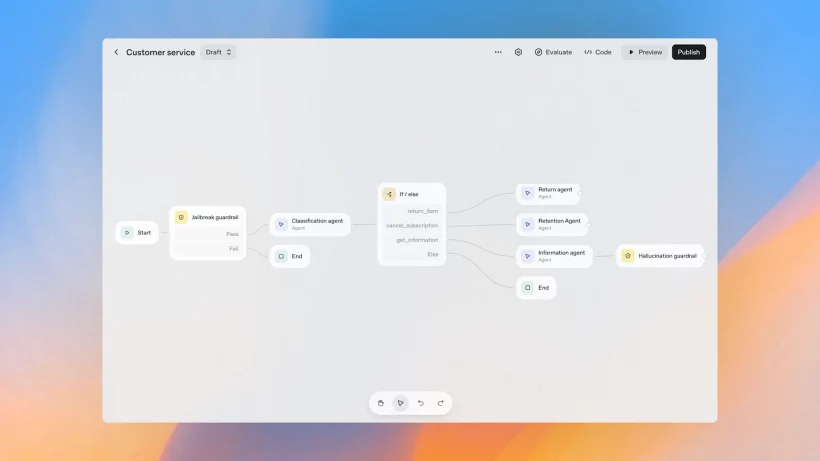OpenAI AgentKit: The Future of AI Agents
In 2025, OpenAI introduced AgentKit, a powerful new toolkit designed to help developers create, manage, and scale AI agents faster than ever before. Instead of building every component from scratch, AgentKit unifies everything an agent needs—logic, integrations, evaluations, and even interface tools—into one streamlined framework.
This release represents more than just another developer API. It’s a major move toward making AI agents a mainstream part of software development, not just an experimental concept.
A Unified System for Building Agents
Until now, creating an AI agent usually required connecting multiple systems manually—handling prompts, APIs, data access, and debugging separately. AgentKit changes that by acting as a central hub for the entire process.
Developers can now:
- Design workflows visually through the Agent Builder, which lets you map logic, preview runs, and iterate without deep backend setup.
- Integrate data sources and tools using the Connector Registry, ensuring agents can securely access APIs or internal systems.
- Embed conversational UIs with ChatKit, a module that allows developers to create chat-style interactions directly within their apps.
- Evaluate and fine-tune performance through built-in testing tools that measure accuracy, response quality, and reliability.
Essentially, AgentKit allows teams to focus on what their agent does instead of constantly managing how it does it.
The Technology Behind AgentKit
At its core, AgentKit builds upon OpenAI’s Responses API and Agents SDK, both launched earlier in 2025. Together, they form the backbone of modern agent-based development.
The Responses API combines natural conversation handling with structured tool usage, allowing agents to interpret instructions, access data, and act—step by step—without needing external orchestration.
The Agents SDK (available in Python and JavaScript) adds deeper functionality: maintaining memory and context, managing multi-agent collaboration, applying guardrails, and collecting trace logs for debugging.
By combining these with AgentKit’s interface and management tools, developers gain a complete ecosystem—from idea to deployment.
What Developers Can Build
AgentKit opens the door to a wide range of real-world applications, such as:
- Customer support systems that handle tickets autonomously.
- Sales assistants that manage outreach, scheduling, and product recommendations.
- Research and analysis bots that connect to databases and summarize findings.
- Internal automation agents that streamline operations within organizations.
Companies like Klarna and Clay have already reported impressive results with early versions of OpenAI’s agent framework—reducing manual workload and improving productivity.
Why AgentKit Matters
What sets AgentKit apart is not just its functionality, but its philosophy. OpenAI is clearly signaling a shift from single-prompt AI interactions to continuous, autonomous workflows. Agents built with this toolkit can make decisions, call APIs, analyze outcomes, and refine themselves—all while staying within developer-defined safety limits.
This approach pushes AI closer to acting as a digital coworker rather than a simple assistant. For businesses, that means faster automation; for developers, it means fewer headaches integrating disparate systems.
Challenges and What Comes Next
While AgentKit’s early reception has been strong, the road ahead brings challenges:
- Ensuring scalability as agents handle complex, multi-step logic.
- Maintaining privacy and data security across third-party integrations.
- Expanding support for multimodal inputs like speech and vision.
Given OpenAI’s track record, future updates will likely expand the kit’s capabilities, introducing deeper reinforcement learning and more customizable guardrails for enterprise-scale use.









